Rebecca S. Ramsey's Blog, page 20
August 19, 2019
The Flood and the Ark
 Welcome to our lesson for August 19, The Flood and the Ark, found in Genesis 6:5 – 9:17 and found in The Complete Guide to Godly Play, Vol 2, 14 Presentations for Fall p. 49-56 (the orange book.)
Welcome to our lesson for August 19, The Flood and the Ark, found in Genesis 6:5 – 9:17 and found in The Complete Guide to Godly Play, Vol 2, 14 Presentations for Fall p. 49-56 (the orange book.)
This is bound to be a favorite story of the children. It’s good to remember that Noah was a good man, but he wasn’t sinless. He pleased God and God “found favor” with him because he loved God and obeyed him, and so his life can serve as an example to all of us.
I’m especially interested in how the children will respond to the wondering question, “I wonder where you are in the story or what part of the story is about you.” If you’re at FBC Greenville, please do have someone write down their responses so we can share them. Thank you!
Idea Sparkers for the Give A Gift to God time:
*A fun snack might be animal crackers. Just make sure they contain no peanut oil or tree nut oil, as we have children with severe allergies to nuts.
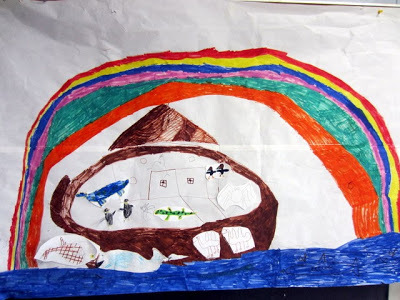
*You may have seen this mural that the children worked on together a couple of years ago for Noah’s ark. Some children made the ark itself, others a rainbow, others pairs of animals (on separate sheets that they cut out and glued to the ark) They LOVED doing this, and there was lots of ownership since each child got to pick what they made. Why not repeat it in your class?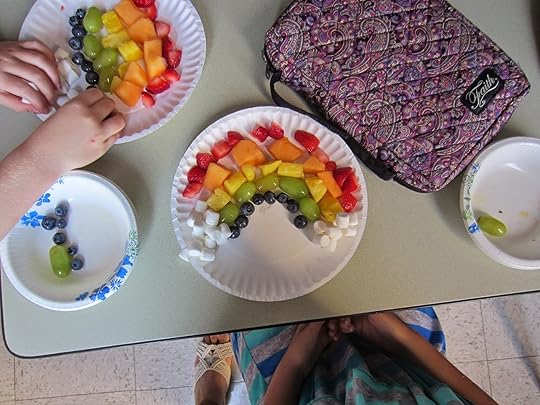 *Kids could make an ark on paper and find magazine photos of animals to glue on to make a collage.
*Kids could make an ark on paper and find magazine photos of animals to glue on to make a collage.
*Make an edible rainbow out of fruit!
*Make animals out of play dough for an ark the class makes.
*Play an animal matching game.
*Emphasize God’s promise by making rainbow castanets, as shown here. Or make any of the other rainbow projects as shown here.
Or a rainbow of promises through people’s hands, like this one our fifth graders did last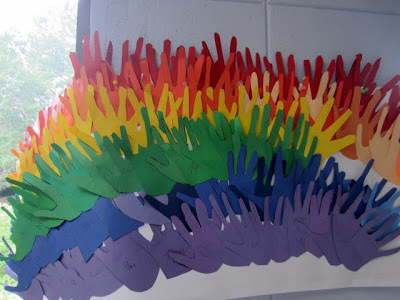 year…
year…
*Make an ark out of Popsicle sticks as shown here. Scroll 3/4 the way down.
For more ideas, see my Pinterest page here.
Enjoy!
Love, Becky
August 12, 2019
The Creation
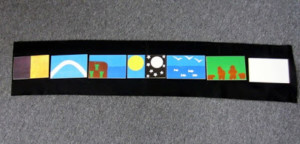 Welcome to our lesson for August 18, Creation, taken from Genesis 1:1-2:3, and also found in The Complete Guide to Godly Play, Vol 2, the orange book, 14 Presentations for Fall.
Welcome to our lesson for August 18, Creation, taken from Genesis 1:1-2:3, and also found in The Complete Guide to Godly Play, Vol 2, the orange book, 14 Presentations for Fall.What a wonderful story about gift giving and creating! As it says in the Godly Play book, you can tell much about the giver by looking at the gift, and what an incredible gift creation is.
Be sure to ask the wondering questions. They’re simple but they invite deep thinking!
1. I wonder which one of these days you like best.
2. I wonder which day is most important.
3. I wonder which day you are in or which one is especially about you.
4. I wonder if we can leave out any one of these days and still have all the days we need.
Classes at FBC Greenville might want to take a mini-field trip down the hall and
 take a look at our world created in tiles years ago during Sunday school.
take a look at our world created in tiles years ago during Sunday school.What can they find on the tiles that shows God’s creation?
For our Make a Gift for God time, here are some ideas to get the children started:
1. Since today is Promotion Sunday at FBG, you may want to use the art response time to do an activity that gives the children a way to introduce themselves to you. You could invite each child to decorate a piece of paper with her/his name (we have plenty of letter stickers in the resource room if you’d like to use them) and drawings of what she/he like to do, their family with pets, her/his favorite foods, etc.
 2. Choose a day (or assign a day) and invite the children to create and illustrate their own plaque or water color drawing- or clay sculpture or pencil drawing depicting that particular day. This could be done as a class mural or completed individually.
2. Choose a day (or assign a day) and invite the children to create and illustrate their own plaque or water color drawing- or clay sculpture or pencil drawing depicting that particular day. This could be done as a class mural or completed individually.Here’s an example in which children did water colors and then put them together.
3.Each child could make her/his own set of days, as is shown here.
Check out dozens of more ideas at the Pinterest site here.
Thank you for all you do for our children!
Becky
August 6, 2019
The Circle of the Church Year
Hi Godly Play Teachers! Welcome to the Circle of the Church Year, our Godly Play lesson for this Sunday, August 11.
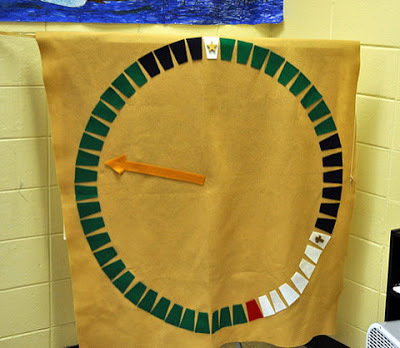
This is one of my favorite lessons of the year. The calendar makes so much sense that I think we should teach it to adults as well!
The lesson comes with wondering questions. I’ll include them in your class folder as well.
Hints for the Create-a-gift-for-God time:
For younger children:
1. Younger children are already learning about calendars and enjoy displaying what they know. Why not go ahead and print on a paper for each child, “Thank You God, for Our Church Year!” Then they could write out the month names and draw things beside each month that they are thankful for…Like a birthday cake on their birthday month. Snow by January. A Valentines heart by February. Kites by March (or basketball, for March Madness!) This is a perfect time to reinforce the special times that the church celebrates on their own calendars- and what time of the year in which they occur.
2. If a younger child wants to make his own calendar, why not? It doesn’t have to be a calendar like we could make. Younger children often like writing their numbers. It would be fun to have different calendars on hand to talk about different ways we keep record of time. I can see lots of inroads for discussion on the church’s calendar with this.
3. Here’s another idea that would be great for younger children- and let’s them practice their knowledge of what color goes with what season, etc. Take a look at it!
4. Why not play with the colors of the church calendar (purple, green, red, white). Here’s a pinterest site with lots of ideas especially great for younger children, but enjoyable for older as well! (It will make you happy just to look, I promise!) The bead necklace version of the calendar is great!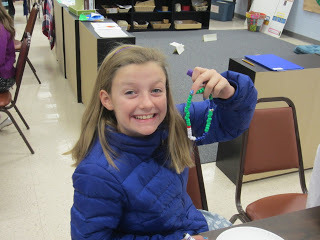
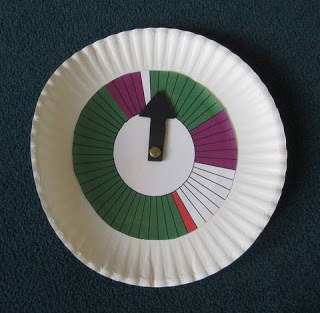
For older children:
The children could make their own rendition of the Godly Play Calendar with a paper plate, a color copy (that I’ll have on hand), a brad, and a fun foam arrow. Susan D. came up with this, and it works great!
Enjoy!
July 29, 2019
The Parable of the Mustard Seed
Welcome to our lesson for August 4, the Parable of the Mustard Seed, found in Matthew 13:31-32, Mark 4:30-32, and Luke 13:18-19.
 The children love this parable, and if you help them process it through the wondering questions, they’re sure to come up with some profound thoughts and ideas.
The children love this parable, and if you help them process it through the wondering questions, they’re sure to come up with some profound thoughts and ideas.The wondering questions are in the book. I’ll have them printed out for you. Thank you for documenting the children’s responses. They’re so interesting for the parents-and for the rest of us!
Now, for some ideas to spark their imaginations as they do their work, making a gift to God…
1. How big do they imagine the mustard seed growing? Why not lay out butcher paper on the floor and let the children draw the tree? I’ve seen a class of fours do this, so I know all of ours can do it to. One team of kids could draw and fill in the tree, another do the leaves, another do the birds and birds’ nests, and another do the sower.
Our fourth grade class did this once and it turned out great!
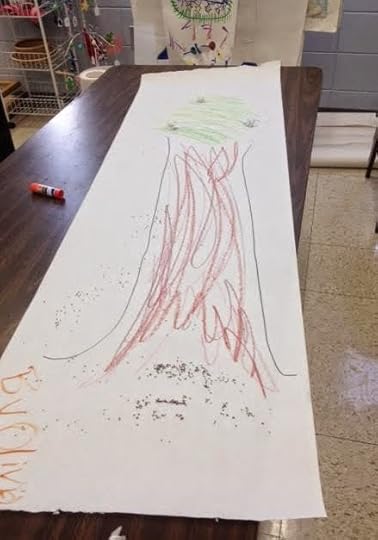
2. Children could individually glue a seed to a paper and draw what the tree will grow to be.
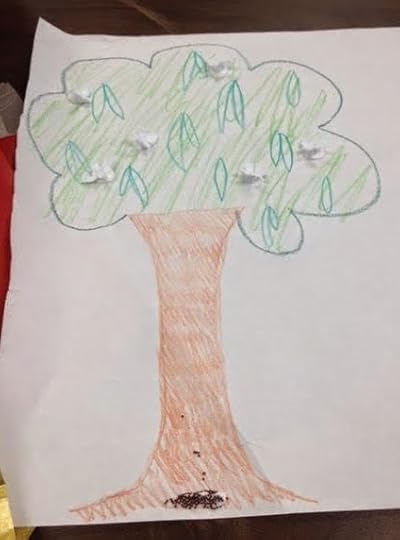
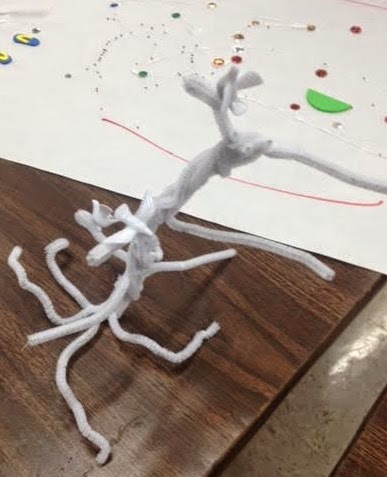 3. Kids could make a mustard tree out of pipe cleaners. They could even add birds!
3. Kids could make a mustard tree out of pipe cleaners. They could even add birds!
4. You could plant a seed, if you haven’t done that lately. It might be fun to plant grass seeds and draw a face on the pot/cup so as it sprouts it looks like hair.
5. The kids could make their own parable box for this one. There’s felt in the resource room for the different parts, and they could also make a person out of a clothespin, birds and nests out of clay.
6. Make a mustard seed necklace as shown here
7. Sample different kids of mustard with pretzels or crackers as a snack.
Check out my Pinterest page here for more ideas.
Enjoy!
Love, Becky
July 22, 2019
The Parable of the Leaven
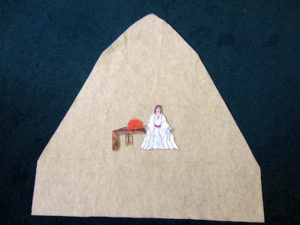 Welcome to our lesson for July 28, the Parable of the Leaven, found in Matthew 13:33 and Luke 13:20-21.
Welcome to our lesson for July 28, the Parable of the Leaven, found in Matthew 13:33 and Luke 13:20-21.
It will be interesting to see what the children make of this parable. As Godly Play often encourages us, it’s good to remember that the children may find meanings that we haven’t even thought of- meanings we can learn from- so it’s important not to steer them too much towards our own understanding.
It’s also good to share how much three measures of flour is. I’ve read that it’s enough to make a dozen loaves of bread- enough bread to feed 100 people!
Be sure to use the wondering questions to help them tease out their own thoughts from their heads. I’d love to be able to share them with the parents in the newsletter, without names attached, of course.
Idea Sparkers for the Make a Gift to God time
1. It might be fun to depict the parable by drawing out exactly how much bread this tiny bit of leaven can make rise. The children could make a mural showing the title of the parable, a drawing of a small amount of yeast, the dozen loaves of bread, and the baker woman. They could write out the short parable at the bottom, and we could put it on one of our big bulletin boards. Drawing out the dozen loaves would bring home how much bread the parable is talking about.
2. Eat bread!
You could also compare unleavened bread with leavened bread by sampling each.
3. The older children could work on the question of how do you show your leavening–or what kind of leaven are you? How do we participate in the kingdom of God? What things do we do to “make the bread of the kingdom rise?” To further the God’s kingdom- to make the world like God wants it to be? This could be done in drawings, with a collage, a poster that the class works on together or separately.
4. Experiment with yeast, testing what happens to warm sugar water with yeast in it. We may have yeast packets in the resource room.
For more ideas, see my Pinterest page on this parable, here!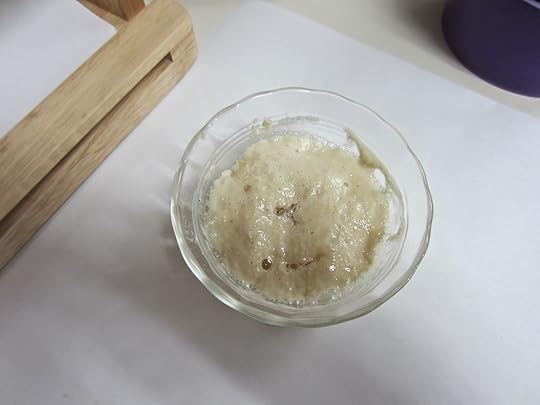
Thanks, y’all!
Enjoy
July 15, 2019
The Parable of the Sower
 Welcome to our lesson for July 21, the Parable of the Sower, from Matthew 13.
Welcome to our lesson for July 21, the Parable of the Sower, from Matthew 13.
Jesus told this parable to answer the question, “What is the kingdom of heaven (God’s kingdom) like?” The wondering questions this week are really important, because they can help the children understand the meaning of the parable. I hope you’ll let the children struggle with each of so many questions. Sometimes it’s very tempting to give them your answer, but a little mind struggling will allow them to find an answer that they can own-instead of one they don’t really get, but feel you want them to believe. Even if they go down a wayward road, (we can always ask more questions to try to help them find their way) we will have “planted the seed” (how appropriate!) which they may discover later.
As you ask the wondering questions, if children have trouble, try to help them put themselves in the place of the sower. (Particularly helpful for questions 3,6,7,8,13,14)
So the important wondering questions we’ll use this week are:
1. I wonder if the person had a name.
2. I wonder who the person could really be?
3. I wonder if the person was happy when the birds came and ate the seeds.
4. I wonder if the birds were happy then they saw the sower.
5. I wonder who the birds really are.
6. I wonder what the person was doing when the little seeds could not get their roots in among the stones.
7. I wonder what the person was doing when the little seeds were choked by the thorns.
8. I wonder what the person was doing when the little seeds were growing in the good earth.
9. I wonder what the harvest could really be?
10. I wonder what the sower used for seed?
11. I wonder what the sower sold?
12. I wonder what the sower kept for food?
13. I wonder if the sower was surprised at the harvest?
14. I wonder what part surprised the sower most?
Idea Sparkers for our Create a Gift for God time:
This is the perfect time to actually sow some seeds. You could use Styrofoam cups or small terra cotta pots which the kids could decorate, then fill with soil in which to plant a seed. You could also have them write a verse on a Popsicle stick to put in the soil near the seeds they sow. They could choose a verse from the Bible story (a good way to have them look up the story themselves) or use Psalm 119:16b “I Shall not forget your Word.”
Children could also reproduce the parts of the parable box-the sower, the birds, the pots, the rocky ground, the thorns, the plants. Or, children could illustrate the parable with watercolors or markers or colored pencils.
For more art response ideas, check out my Pinterest page, here.
Enjoy!
July 8, 2019
Taking Off Our Blindfolds
 This children’s sermon was written to accompany a sermon based on Luke 16: 19-31, the story Jesus tells the Pharisees about Lazarus, the poor man covered with sores who stays outside the rich man’s gate, hoping to eat the crumbs off his table, and what happens when they both die. Instead of sharing the whole story with the children, I focused on the first part and how it applies to us today.
This children’s sermon was written to accompany a sermon based on Luke 16: 19-31, the story Jesus tells the Pharisees about Lazarus, the poor man covered with sores who stays outside the rich man’s gate, hoping to eat the crumbs off his table, and what happens when they both die. Instead of sharing the whole story with the children, I focused on the first part and how it applies to us today.
Good morning! Today I brought something in my bag that you might recognize if you came to either week of our Missions Blasts. What is it? Yes these are blindfolds. We used them in games and they were really fun. One of the games we played was called the Good Shepherd. If you got to be the good shepherd, you got to stand in the middle of the circle of kids who were pretending to be sheep, and put on a blindfold. Then I’d point to one child- one sheep- and that child would baaa, and the good shepherd would guess who was the sheep. (Because the Good shepherd- like Jesus- knows all his sheep.)
These are good blindfolds because not only are they fun to look at, they really work. If you put them on you can’t see anything! All kinds of things could happen and you’d be clueless as to what was going on unless you had really good other senses to figure it out.
In today’s scripture, Jesus tells a story about a man who acted as if he had a blindfold on! He said that there once was a really rich man who wore the BEST clothes and ate big feasts every day! But out by the gate to his house there was a poor man named Lazarus, covered with sores, who wished and longed just to eat the crumbs that fell from the rich man’s table. Even the dogs would bother him, licking his sores. But the rich man did nothing. Though he knew the man was there, suffering, it was like he was wearing a blindfold. He choose to do nothing.
Sometimes people do the same thing in life. Sometimes we all do. We act as if we can’t see the suffering of people around us and far from us- like the kid who people make fun of or the one who is left out. We choose to do nothing. But Jesus knows every one of us, every sheep. He knows the sound of our cries. And he calls us to take off our blindfold and do SOMETHING to those who are hurting among us. It’s hard to look at people suffering. Maybe because we know that as Christians God calls us to look, to see, to pray, and then DO SOMETHING! It’s easier to pretend that we don’t see, to put on our blindfolds. But Jesus says LOOK! SEE MY SHEEP! I KNOW THEIR NAMES. FEED THEM. HELP THEM. If we really want to be like Jesus, we put the blindfolds away.
Let’s pray: Dear God, we do want to be like Jesus. Help us not ignore people who are suffering. Help us find a way to help them. We love you God. Amen.
The Parable of the Great Pearl
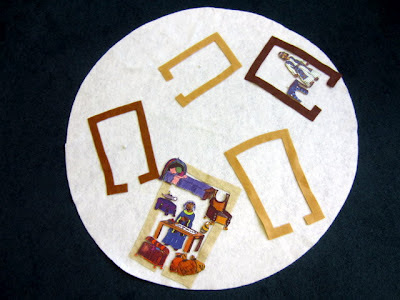 Welcome to our lesson for July 14, the Parable of the Great Pearl, based on the scripture found in Matthew 13:45-46.
Welcome to our lesson for July 14, the Parable of the Great Pearl, based on the scripture found in Matthew 13:45-46.
In a world like ours which places such importance on having things, this story gives us a chance to explore the greatest treasure one can possess: God’s kingdom and a relationship with God. What does it mean to sell all that we have to obtain this treasure? I bet the kids can help us figure this out.
The wondering questions are in the book. They include:
1. I wonder if the person was happy with the great pearl.
2. I wonder what the merchant is going to do now.
3. I wonder why the seller was willing to give up something so precious.
4. I wonder if the seller has a name.
5. I wonder if the merchant has a name.
6. I wonder what the great pearl could really be?
7. I wonder what could be so precious that a person would exchange everything for it?
8. I wonder if you have ever come close to the great pearl.
9. I wonder where this whole place could really be.
Thank you for having an adult take time to jot down the children’s responses to these questions.
Idea Sparkers for Our Give a Gift to God Time:
1. Make a “pearl” necklace. Hobby shops (Michaels, Hobby Lobby) has fake pearls that you can string. Each student could make themselves a necklace using one pearl and yarn, along with whatever other work they choose to do today.
2. What does the kingdom of God look like? What makes it such a priceless treasure?
Children could draw a mural together or individual pictures. What could they show people doing in the kingdom of God? Is nature in the kingdom of God? How are people treating nature and each other?
3. Children could make their own parable set, so they can retell this parable.
4. Make/buy a “pearl” snack to share. Maybe vanilla wafers to make the oyster shell and then frosting in between with a pearl of a dot of white frosting or a white jelly bean?
See more ideas on my Pinterest page, here.
Thanks, y’all!
Becky
July 3, 2019
What Do We Do with the Bad Seed?
 This children’s sermon was written to accompany a sermon on Luke 13:6-9, the parable of the barren fig tree. The preaching minister asked that I help kids think about whether we should give up on people or give them grace. The Bad Seed was perfect for this!
This children’s sermon was written to accompany a sermon on Luke 13:6-9, the parable of the barren fig tree. The preaching minister asked that I help kids think about whether we should give up on people or give them grace. The Bad Seed was perfect for this!
Good morning, girls and boys. Today we’re thinking about whether or not we should give up on people when they do bad things and I brought with me a book that I love. It’s called The Bad Seed and it’s written by Jory John. I’m going to read parts of it, but I’ll have it in our Gathering Room so you can take your time and read the whole thing.
(I read most of the beginning, summarized the part about how he became a bad seed, and then picked up at the end to read the ending.)
So even bad seeds might change! I like this book because it reminds me that we’re all a mix of good and bad, and God calls us to help each other by remembering that. We’re going to have a prayer, and after the prayer, we’re going to hear a parable from the bible. I hope you’ll listen and see how you think The Bad Seed and the parable all fits together.
Dear God, help us be as generous with our love for others, as you are with us. We love you, God. Amen.
July 1, 2019
The Parable of the Good Samaritan
Welcome to our lesson for July 7, the Parable of the Good Samaritan.
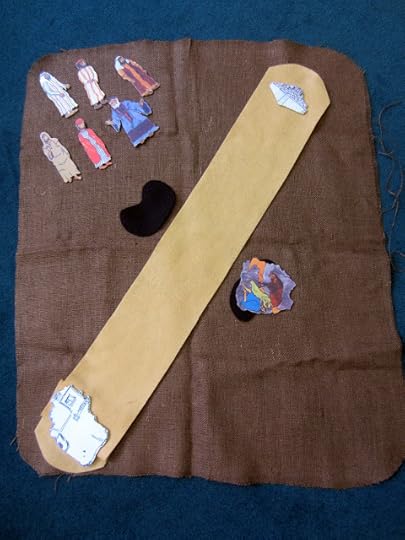
What a wonderful story about what it means to be a neighbor and our responsibilities as followers of The Way to help those around us. If you’re at FBC Greenville, you might want to include time in your morning to go visit the Good Samaritan statue near the remembrance garden.
Here are some wondering questions. Thank you for writing down their responses.
Wondering Questions:
1. I wonder who is the neighbor to the person who was hurt, had everything taken from him, and was left by the side of the road half dead?
2. I wonder what would happen if the person finding the injured traveler were a child?
3. I wonder what it means to be a neighbor.
4. I wonder if you’ve ever had anyone be a neighbor to you like this Samaritan was to the hurt man.
5. I wonder if you’ve ever been the one who was the Good Samaritan?
Idea Sparkers for our Gift to God Time
Here are some ideas for the parable itself:
1. Make get well cards as a way to help others, like the Good Samaritan in the story
2. Act out the story.
3. Make a collage or drawing on who is our neighbor.
4. Make a collage or drawing on How I Can Be a Good Samaritan.
5. You could also go with the What Would Jesus Do theme. Make a bracelet with WWJD, or a mural of the story, or act out scenes of different conflicts and ask the question, “What would Jesus do?”
6. If you’ve visited the Good Samaritan statue, why not ask the children if they’d like to try to make their own with play dough or quick dry clay?
See more art response ideas at my Pinterest Page, here.
Thanks for all you do!



